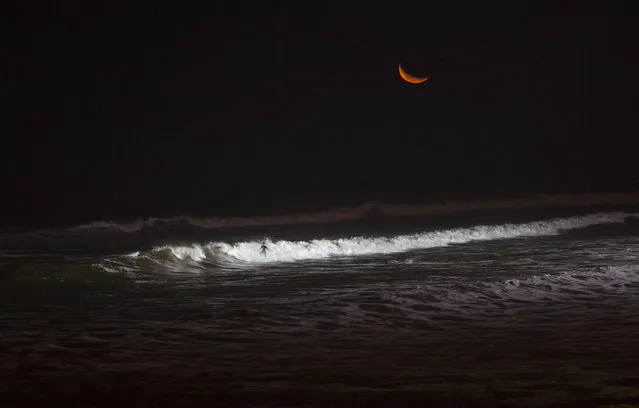
In this March 2, 2017 photo, a man rides a wave in the Pacific Ocean waters of La Papilla beach in Lima, Peru. As most Lima residents prepare to sleep, a handful of hardcore surfers descend on the only beach in Peru where they can ride the waves at night. The South American country has decked out La Pampilla beach next to the well-heeled capital district of Miraflores with four 1,000-watt lights like those used in soccer stadiums. Placed high above the beach, their light reaches about 200 meters (250 yards) out to the water, providing enough illumination to surf after nightfall. Pampilla beach does not attract sharks, unlike some beaches in the United States and Australia. The greatest danger faced by night surfers might be crashing into one another, blinded by the powerful lights. The beach attracts fewer than two dozen surfers a night, and so far there have been no reported accidents. La Pampilla is the second beach in Latin America set up for night surfing. The Brazilian beach of Arpoador, one of the biggest surf landmarks in Rio de Janeiro, has had artificial lights since 1989. Night surfing apparently came about in Lima because of a dispute with the capital municipality that in 2015 increased the width of a road that runs along the coast. The surfers protested the construction for months by camping on the asphalted beach area, but in the end the municipality prevailed, with support from the police. At the end of 2016, perhaps to win over the surfers, Lima's mayor set up the beach lights. (Photo by Rodrigo Abd/AP Photo)
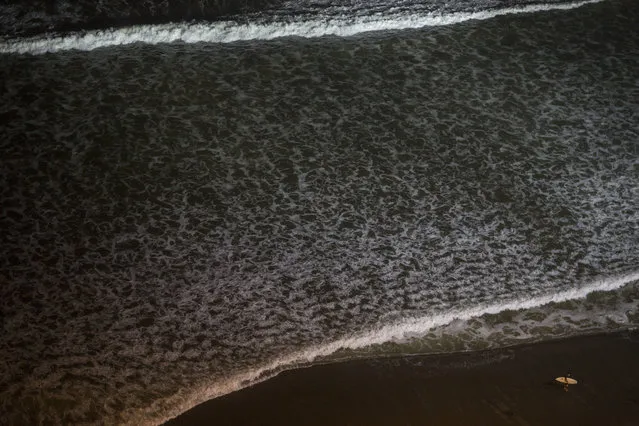
In this March 9, 2017 photo, a surfer walks on the shore of La Pampilla beach, Lima, Peru. The Andean country has decked out the beach with four 1,000-watt lights like those used in soccer stadiums. Placed high above the beach, their lights reach about 200 meters out to the water, providing enough illumination to surf after nightfall. (Photo by Rodrigo Abd/AP Photo)
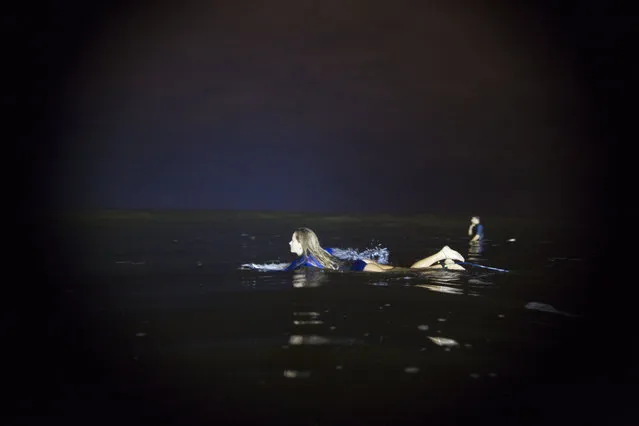
In this March 15, 2017 photo, Marie Schoene looks for a wave to surf in La Pampilla beach in Lima, Peru. Pampilla does not attract sharks, unlike some beaches in the United States and Australia. The greatest danger faced by night surfers is that they can crash into each other, blinded by the powerful floodlights. (Photo by Rodrigo Abd/AP Photo)
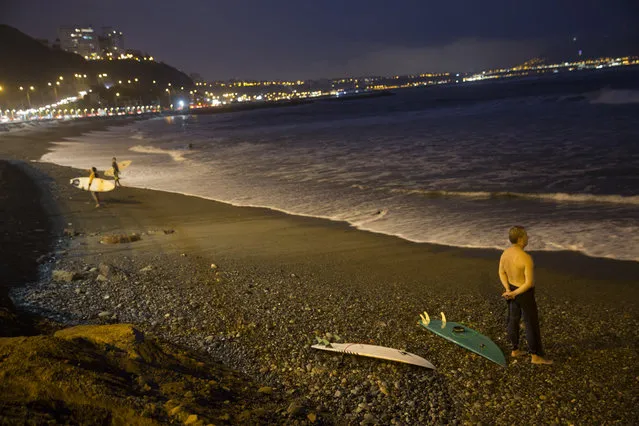
In this April 21, 2017 photo, a man looks out at the Pacific Ocean from the shore at La Pampilla beach in Lima, Peru. Pampilla is the second beach in Latin America that is set up for night surfing. (Photo by Rodrigo Abd/AP Photo)
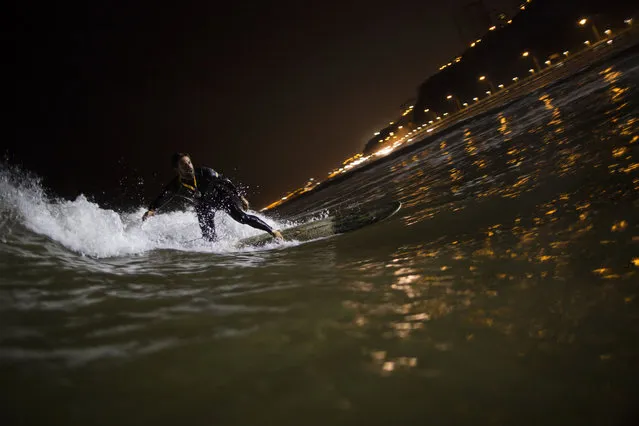
In this April 26, 2017 photo, Ernesto Benavides rides a wave in the waters of La Pampilla beach in Lima, Peru. As most Lima residents prepare to sleep, a handful of hardcore surfers descend on the only beach in Peru where they can ride the waves at night. (Photo by Rodrigo Abd/AP Photo)
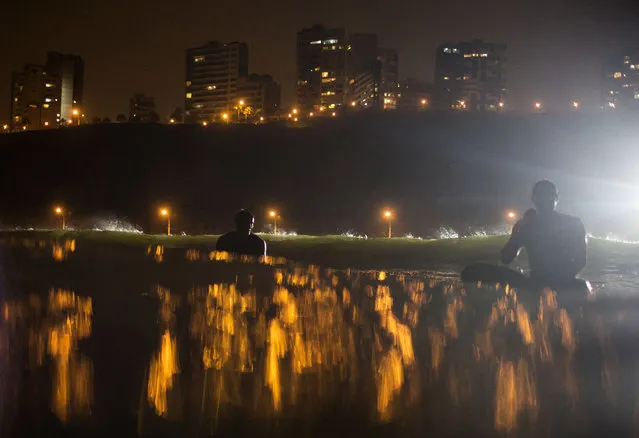
In this March 13, 2017 photo, surfers wait for the right wave to catch in La Pampilla beach, Lima, Peru. The beach does not attract sharks, unlike some beaches in the United States and Australia. The greatest danger faced by night surfers is that they can crash into each other, blinded by the powerful floodlights. (Photo by Rodrigo Abd/AP Photo)
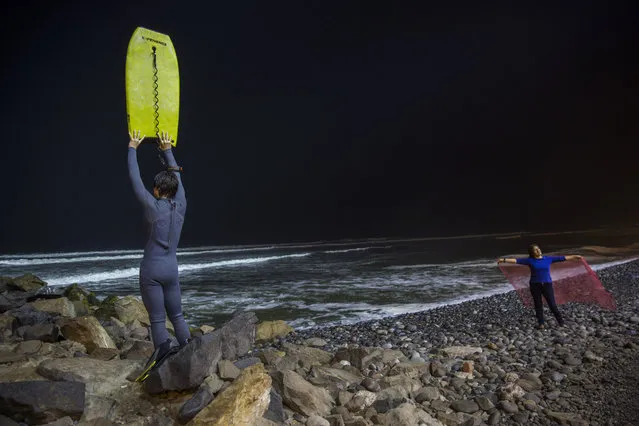
In this April 21, 2017 photo, Renato de Negri, 15, lifts his boogie board to signal to a fellow surfer in Pacific Ocean waters that he has returned to shore, at La Pampilla beach, in Lima, Peru. Pampilla beach does not attract sharks, unlike some beaches in the United States and Australia. The greatest danger faced by night surfers is that they can crash into each other, blinded by the powerful floodlights. (Photo by Rodrigo Abd/AP Photo)
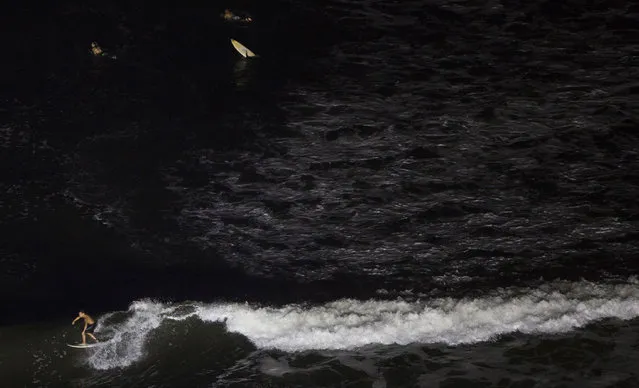
In this March 9, 2017 photo, a man surfs in the waters of La Pampilla beach in Lima, Peru. Pampilla is the second beach in Latin America that is set up for night surfing. (Photo by Rodrigo Abd/AP Photo)
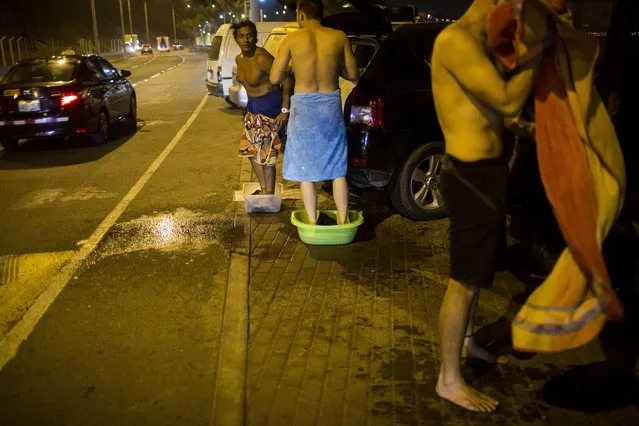
In this March 1, 2017 photo, surfers stand in tubs to catch the sand and salt water they rinse off their bodies before getting into their vehicles, at La Pampilla beach in Lima, Peru. The beach attracts fewer than two dozen surfers a night. (Photo by Rodrigo Abd/AP Photo)
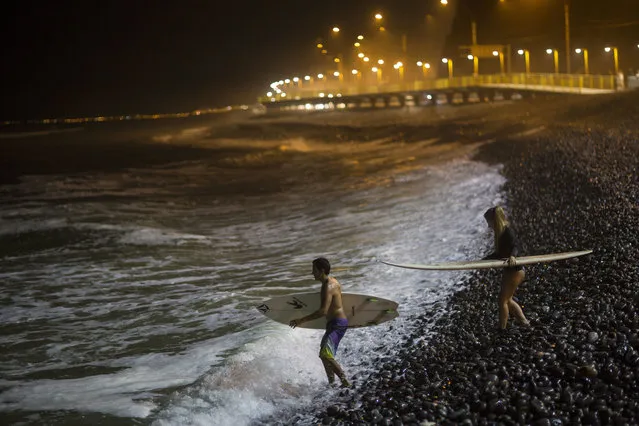
In this March 1, 2017 photo, surfers walk over the rocky shore into the Pacific Ocean at La Pampilla beach in Lima, Peru. The beach attracts fewer than two dozen surfers a night. (Photo by Rodrigo Abd/AP Photo)
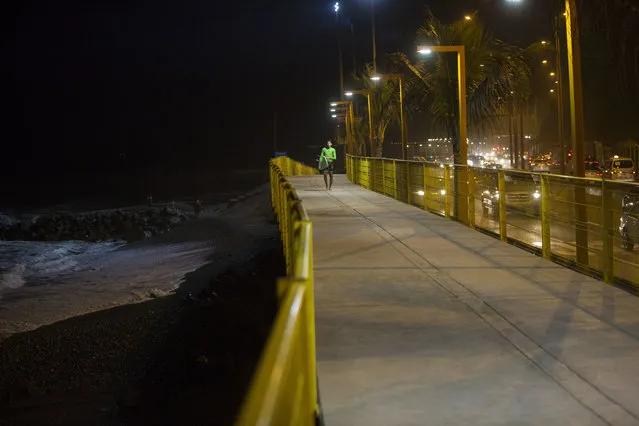
In this March 1, 2017 photo, a surfer walks along the promenade that lines La Pampilla beach in Lima, Peru. The Andean country has decked out Pampilla with four 1,000-watt light like those used in soccer stadiums, providing enough illumination to surf after nightfall. (Photo by Rodrigo Abd/AP Photo)
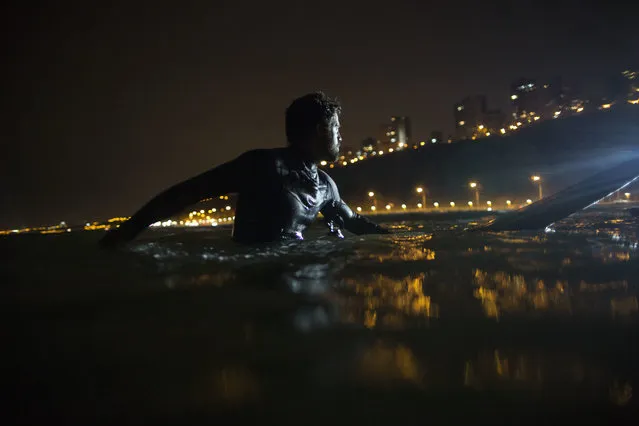
In this March 8, 2017 photo, Ernesto Benavides waits to catch a wave in La Pampilla beach in Lima, Peru. Night surfing came about in Lima because of a dispute with the capital municipality that in 2015 increased the width of a road that goes by the coast. (Photo by Rodrigo Abd/AP Photo)
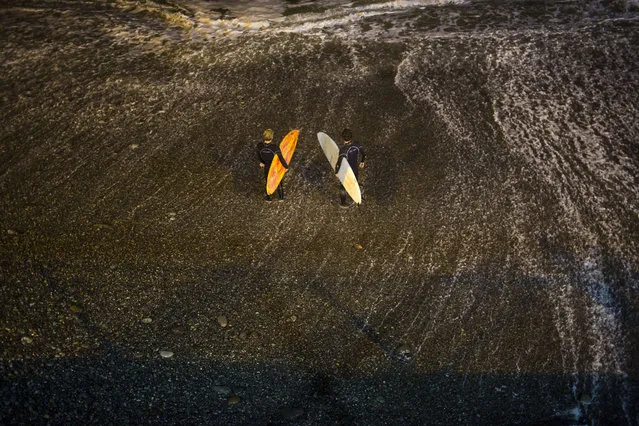
In this March 1, 2017 photo, surfers prepare to jump in the Pacific Ocean in La Pampilla beach in Lima, Peru. The Andean country has decked out Pampilla with four 1,000-watt lights like those used in soccer stadiums. Placed high above the beach, their lights reach about 200 meters out to the water, providing enough illumination to surf after nightfall. (Photo by Rodrigo Abd/AP Photo)
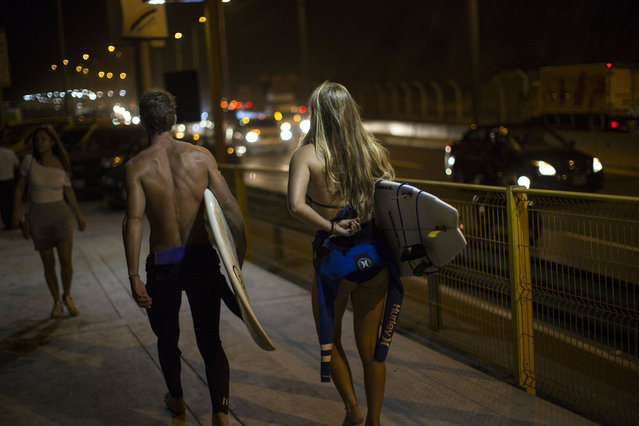
In this Feb. 17, 2017 photo, surfers walk to La Pampilla beach in Lima, Peru. Night surfing apparently came about in Lima because of a dispute with the capital municipality that in 2015 increased the width of a road that runs along the coast. The surfers protested the construction for months by camping on the asphalted beach area, but in the end the municipality prevailed, with support from the police. At the end of 2016, perhaps to win over the surfers, Lima's mayor set up beach lights that allows for night surfing. (Photo by Rodrigo Abd/AP Photo)
04 May 2017 09:23:00,
post received
0 comments
